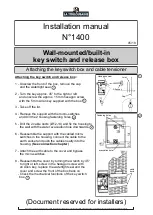
2-11
creating a new RADIUS scheme, you should configure the IP address and UDP port number of each
RADIUS server you want to use in this scheme. These RADIUS servers fall into two types:
authentication/authorization, and accounting. And for each type of server, you can configure two
servers in a RADIUS scheme: primary server and secondary server. A RADIUS scheme has some
parameters such as IP addresses of the primary and secondary servers, shared keys, and types of the
RADIUS servers.
In an actual network environment, you can configure the above parameters as required. But you should
configure at least one authentication/authorization server and one accounting server, and you should
keep the RADIUS server port settings on the switch consistent with those on the RADIUS servers.
Actually, the RADIUS service configuration only defines the parameters for information exchange
between switch and RADIUS server. To make these parameters take effect, you must reference the
RADIUS scheme configured with these parameters in an ISP domain view (refer to
AAA Configuration
).
Creating a RADIUS Scheme
The RADIUS protocol configuration is performed on a RADIUS scheme basis. You should first create a
RADIUS scheme and enter its view before performing other RADIUS protocol configurations.
Follow these steps to create a RADIUS scheme:
To do…
Use the command…
Remarks
Enter system view
system-view
—
Enable RADIUS
authentication port
radius client enable
Optional
By default, RADIUS authentication port
is enabled.
Create a RADIUS
scheme and enter its
view
radius scheme
radius-scheme-name
Required
By default, a RADIUS scheme named
"system" has already been created in
the system.
A RADIUS scheme can be referenced by multiple ISP domains simultaneously.
Configuring RADIUS Authentication/Authorization Servers
Follow these steps to configure RADIUS authentication/authorization servers:
To do…
Use the command…
Remarks
Enter system view
system-view
—
















































